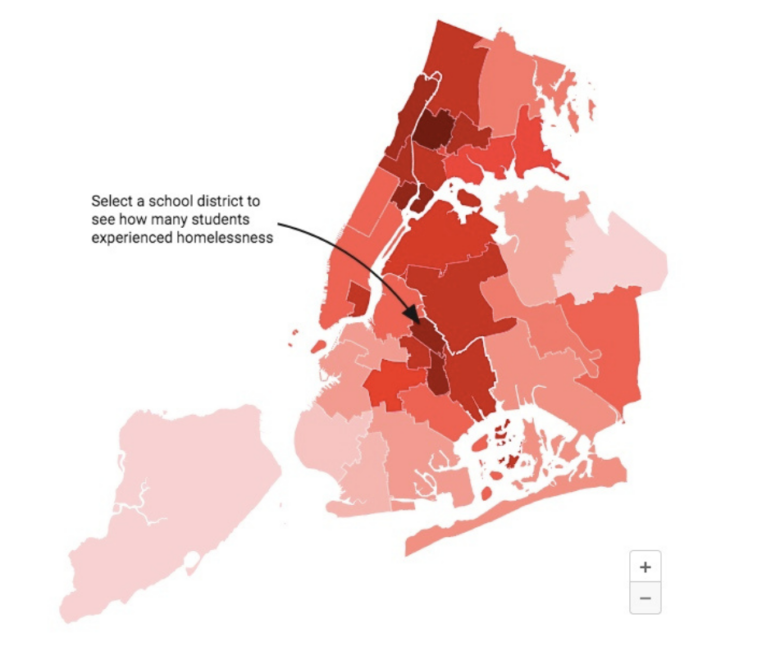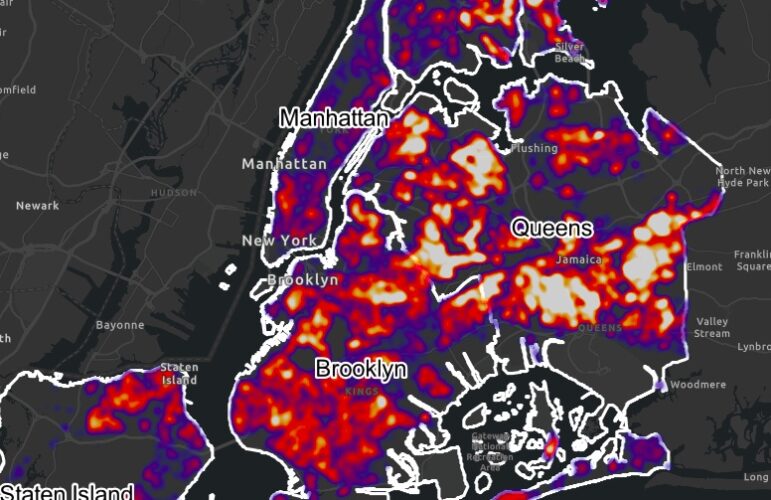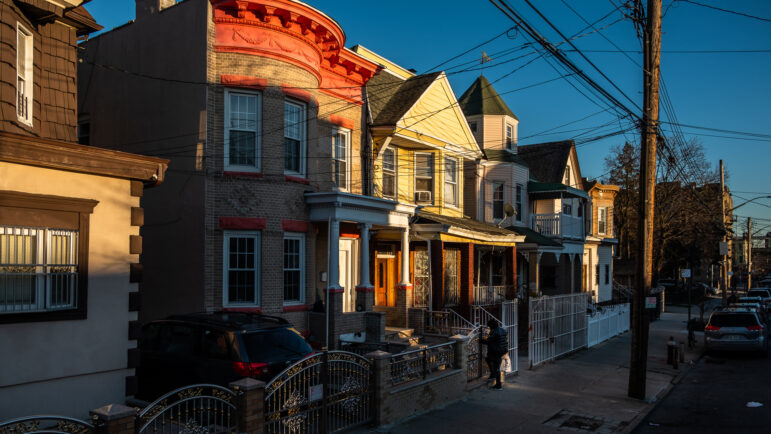Norman Siegel knows how to work a room. Rule number one: Start out by offending everyone in it. Siegel steps into the parlor of a Brooklyn Heights brownstone, into the presence of the kind of people who turn out on June evenings to hear candidates for public advocate speak. “This is good,” he says, nodding thoughtfully from side to side. “An integrated room.”
Well, it was. All the races present found themselves united under one excruciating silence. Ignoring the winces all around, Siegel started to talk about what he wants to do for the city. He’d put parent and student representatives on the Board of Ed. If city agencies didn’t reflect the racial makeup of the city, he’d push the mayor to make them. If someone tried to build an Olympic stadium on the West Side, he’d sit in front of the bulldozers and “bring construction to a screaming halt.” If the city didn’t fix Queens Boulevard, he’d stage a sit-in right on the Boulevard of Death.
One by one, he conjured up the things that rile New Yorkers most–race, schools, poverty, transportation–and nailed exactly what needed fixing. After the initial shock, the haggard, passionate lawyer (they’d cast Al Pacino) practically had them ready to volunteer for his campaign.
He’ll need them. Norman Siegel, civil rights lawyer all the way back to Mississippi 1968, the man who once tried to stop the Vietnam War with a lawsuit and fought Rudy Giuliani in defense of the First Amendment 27 times over, is in another battle that he stands little chance of winning.
After three decades defending what he calls, in his unreconstructed Borough Park accent, “the marketplace of idears,” Siegel is entering a less exalted arena: the world of retail politics. This February, Siegel quit as head of the New York Civil Liberties Union to run for public advocate. He has less money than his opponents, and no major endorsements except Al Sharpton’s. He’s up against three beloved public servants with solid legislative histories and grateful constituents, one very well-connected former Parks Commissioner, and one hell of a salsa musician. As if that weren’t enough, he’s already plotting to rewrite the rules of the office he hasn’t even won yet. “It’ll be a hoot!” he exclaims, in his customary dated slang.
Instead of the awkward marriage of consumer advocate and vice-president that the current city charter requires, Siegel is proposing a completely unheard-of idea: that the public advocate’s position, heretofore held by a man who now wants to be mayor, is no place for a politician. “The insiders have monitored the insiders for too long–we need an outsider!” urges Siegel to a crowd of elderly conservative Jews on the Upper East Side. After alienating them immediately with his usual topic, race, he got them talking–and now they’re listening. Stalking before the crowd like a storefront preacher, he sells them his vision: “There’s somebody in government, who’s part of government, who’s going to fight the government for you!” Thunderous applause.
There’s only one problem: By law, the public advocate’s office is a place for a politician: If the mayor should die, the city charter says the public advocate takes over. Partly for that reason, the job has always been viewed as a steppingstone to Gracie Mansion. And people–especially people in political and advocacy circles–think of Siegel as anything but a politician. He’s the guy you call when you need to fight a politician.
At the East 55th Street Conservative Synagogue, one man challenged him to prove that he could perform a respectable job as mayor. He could do it, said Siegel, if, God forbid, it would be necessary; but it’s not why he’s running for office.
Not only does Siegel say he has no interest in running for mayor, he’s promoting the idea of eliminating succession. Training to be mayor, says Siegel, should not be part of the public advocate’s job, because the advocate should be dedicated to opposing the mayor.
That’s all fair game–as public advocate, it would be his job to constantly evaluate the landscape of the city charter, including his own job. But it’s when Siegel starts talking about endowing the office with the power to independently subpoena city officials–“almost like an attorney general for the City of New York”–that critics start to get really worried. “In all honesty, that’s an invitation to Joe McCarthy,” responds Ken Sherrill, chair of the political science department at Hunter College. “One of the rules of politics is never structure a political office for one person. Think of who’s going to get it down the line! I’m not sure you want to elect Robespierre.”
Sherrill thinks the position of public advocate should be more closely tied in to the rest of city government, not less, and others agree. “Having a place that’s inside city government that can help people, that’s invaluable,” says Legal Aid lawyer Elisabeth Benjamin, who successfully sued the city to get immigrants access to Medicaid. “There’s a lot of voices of the people out there, but there’s less people who can call a city agency and say, ‘Hey, I work for the city, you work for the city, help us out here.’”
Indeed, at $2.6 million the office is smaller than many of the outside advocacy groups it teams up with (not the NYCLU, though, which clocks in at a puny $2 million). Siegel’s critics say there’s no way he’d be able to take the aggressive legal approach he’s proposing and carry out his appointed duties.
“You can talk about all these good ideas, but the reality of doing them with an office of 35 or 40 people?” says one government observer of the public advocate’s work. “I’ve heard Norman talk about what he would do with the office, and I think he shows his lack of experience and naiveté. If you read the charter, I don’t think that’s what the public advocate’s office was set up to be.”
_______
The truth is, nobody’s really sure what the public advocate’s office was set up to be. After Siegel’s speech to the Conservative Congregation, a silver-haired woman in a powder-blue suit traps him by the coffee and danish. “I’d like to have one specific example,” demands Beverly Schwartz, “that would let me know what the function of the public advocate is!”
Though it’s fashionable to say the office has no responsibilities, the public advocate actually has two distinct sets of duties: ombudsman and watchdog. Beverly Schwartz wants a watchdog. “I think Rudy’s done a great job,” she says. “But every now and then, I wonder: what happened to my school?” The watchdog is supposed to monitor city agencies, like the Board of Ed, and make sure they’re doing their job.
Her friend Rochelle Rubin, who came with her, needs an ombudsman for her uncle, who found his bank account mistakenly seized. The ombudsman is supposed to help out people who have problems with city agencies.
Since first being elected public advocate in 1993, Mark Green has done both, generating 140 reports and investigations on issues ranging from childhood lead poisoning to corruption in the city’s lifeguard’s union. He has sued the city three times, most notably to get records of civilian complaints about police misconduct. And long before Eliza Izquierdo’s death put the child welfare system under national scrutiny, he set up an office called C-Plan, with money from public and private sources, to monitor and hopefully remedy its more egregious failures.
He’s accomplished a lot, considering the dubious origins of the office. Back in 1989, the job might have been abolished but for its incumbent, Andy Stein, scion of the Finkelstein fortune. Stein was City Council president, a job with vaguely defined duties but as many votes as the mayor on the powerful Board of Estimate. In the city charter’s last major overhaul, the board was abolished by court order, and Stein’s job was almost axed as well.
Keeping the office was “a matter of considerable controversy,” says Frederick A.O. Schwarz, who served on the 1989 charter revision commission. Many wanted to kill it, but the majority were against removing a third citywide office. The commission wanted a counterweight to the mayor’s power besides the comptroller; they wanted to keep the field open for mayors-in-waiting; and, though Schwarz disagrees, many say they couldn’t dismiss the well-connected Stein. “They didn’t have a clear idea of what it was going to be,” says Sherrill, “except that they weren’t going to abolish Andy Stein’s position.”
The presidency was saved, but it failed to vault the feckless Stein into Gracie Mansion. After he dropped out of the 1993 race, the Finkelstein fortune was diverted to the newspaper chain the family bought to help get him elected. But the taint of political vanity job still clings to the office, even after the name was changed to public advocate, and newspapers run by larger fortunes than Finkelstein’s–think Arthur Carter and Rupert Murdoch–piously call for its abolishment.
A little guy could get lost in all this. Along with ombudsman and watchdog, Mark Green inherited two roles that even Schwarz admits can contradict themselves: checking the mayor’s power, and aspiring to the office himself. To do both effectively, while fending off Rudy’s repeated attempts to derail him, he’s had to do some serious political maneuvering. Instead of taking a litigious approach, Green has chosen his issues carefully, picking ones where a gentle nudge–a well-timed report, the legitimacy of a city agency–could bring much-needed support to the efforts of others, or help convince them to join a battle.
And he has avoided some complicated and politically sensitive battles–like championing the land use plans that neighborhoods around the city drafted under the charter’s new 197-a provisions, only to see the Department of City Planning ignore them.
Most typically, he’s teamed with carefully selected allies, working behind the scenes and issuing reports, then handing them off to members of the City Council to write into law or to activists to brandish in their own lawsuits. “He did a great report on kids and lead paint–I’ve been able to cite that all over the place,” says Matthew Chachère of the New York Coalition to End Lead Poisoning. When City Council Speaker Peter Vallone teamed up with Mayor Giuliani in 1999 to pass a bill that neutered safeguards against lead poisoning, Green wrote letters asking a judge to delay the vote; so did 15 members of the City Council. While he still wonders how many of them “actually looked at the darn thing,” Chachère says Green’s report helped get those councilmembers on board. (In the end, the Council passed the mayor’s legislation; it was subsequently ruled illegal by a state judge and is currently under appeal.)
Legal Aid’s Benjamin credits Green for adding his weight at a crucial moment. Last year, Maximus, the company the city hired to enroll New Yorkers in Medicaid managed care, was consistently failing to deliver information to patients. Green produced a well-timed report on Maximus’ failures, joining corrective legislation by Councilmember Steven DiBrienza (now running for public advocate himself), an audit from the federal Health Care Financing Administration and a lawsuit from Benjamin. “It was very helpful, because there was pressure coming from multiple sides, on this system, saying, ‘Change this,’” says Benjamin. “And so with all that push on the system, including the public advocate’s report, they had to take a good hard look at Maximus.” In the end, the city forced Maximus to do its job.
Still, some criticize Green for picking his battles a little too carefully. “He was conspicuous in his absence until the very end, when it was clear we were winning,” says Judy Wessler, who for seven years battled Giuliani’s attempts to privatize the public hospitals. “Every other elected official was doing things, even if it wasn’t their borough, but he was not around until the very end.” She’s backing Fernando Ferrer for mayor. (Green spokesperson Steve Sigmund notes that Green made statements opposing the privatization of Coney Island and Harlem hospitals.)
And several others, loath to criticize a possible mayor on the record, agree. “I guess I had fantasies he’d be out there more strongly, bringing lawsuits,” says one. “As time went by, I think many of us saw that there were more press releases coming out and not the kinds of investigations and activism we had hoped for.”
But litigation and investigation cost money, and in 1994, Rudy cut the public advocate’s budget by almost $400,000. Perhaps the best measure of Green’s success in office is how much he pissed Rudy off. “Mark Green was one of the few elected officials who has consistently stood up to the mayor and tried to hold ACS accountable,” says Mike Arsham, head of the Child Welfare Organizing Project, who defended parents’ rights at a time when they were under attack by the Giuliani administration. “The past eight years are a case in point as to why you have to have checks and balances on power. This is the closest thing we’ve had to a check on the unbridled power of a megalomaniacal mayor.”
_______
Except, maybe, for one other guy. Right now, he’s in the middle of Times Square, surrounded by cops. Cops on horseback, cops on foot, all hustling a swarm of teenagers off 43rd Street and onto the sidewalks, and here comes one mustachioed cop, headed straight at him.
Grinning, the young officer extends an arm with playful courtesy: Apparently Siegel, scourge of the NYPD, doesn’t get herded behind blue police barricades with the rest of the unruly citizens. To Siegel’s ‘What, me a VIP?’ expression, the cop, clearly a fan, replies: “I seen you last month at John Jay.” Turning back to his crowd-control duties, still beaming at Siegel, he adds gleefully, “‘Scuse me–I gotta go vi’late somebody’s civil rights!”
Siegel shakes his head, smiles. As head of the NYCLU, he defended the public’s right to speak and travel freely through the city, and knocked down as many police barricades as any street-fighting activist. But he’s also gotten a following among cops, by winning them the right to criticize the NYPD without being punished. More than anyone, Siegel has expanded the boundaries of what New Yorkers are allowed to say and do in public life, and it has earned him a lot of unexpected friends.
You might not expect to find the defender of free expression with William Donohue, the Catholic crusader who splattered the Brooklyn Museum with the elephant dung controversy. But there they were, Siegel and Donohue, holding a joint press conference on religious tolerance.
Siegel can also get the usual suspects to do the unexpected. Al Sharpton is one of them. That Sharpton is backing Siegel’s bid is no surprise. But when Siegel defended Joseph Locurto, the Broad Channel cop dismissed for appearing in blackface on a racist float, Siegel got Sharpton to testify in court in favor of Locurto’s reinstatement. And when Siegel defended the Klan’s right to rally in the city last year, there was respect instead of the usual anti-NYCLU outcry, thanks in part to Siegel’s public support from black leaders. “For me, that was a telling moment,” says Steve Hyman, chairman of the NYCLU’s board of directors. “We were always the group that people would say, ‘Oh, them.’ We were fringe.” Siegel, with a little help from Rudy, brought civil liberties into the mainstream.
Not without some conflict. The NYCLU’s mission is strictly to advance civil rights and civil liberties. Since Siegel took over in 1985, he consistently pushed the NYCLU to take on race and poverty battles, especially police brutality. “Norman would at times bring issues to us that would be–I don’t want to say pushing the envelope, but at the envelope,” says Hyman. “He certainly made sure that we went where we should go.”
But if it caused conflict, expanding the NYCLU’s scope ultimately raised its profile and got it more respect. He even gets props from curmudgeonly criminologist Tom Reppetto of the Citizens Crime Commission, who’s not given to gushing. “He got a CCRB, didn’t he?” snorts Reppetto, referring to the Civilian Complaint Review Board. “I remember Commissioner Lee Brown said, ‘He’s only one man!’ And I said, ‘Well, I think maybe Commissioner Brown doesn’t realize what that one man at the NYCLU can do.’ And lo and behold, there was a CCRB.”
Siegel had pushed for the CCRB since 1991, even squeezing more money out of Giuliani for it. He went from community board to community board, as he later would with other police brutality issues, to garner support for a CCRB independent of NYPD control. “It was a brilliant stroke: it made it not a fringe issue, but a mainstream issue,” says Hyman. “And mainstream issues have to be responded to.”
Siegel is hoping he can do the same with the public advocate’s office: that by leveraging popular political momentum, he can change the climate to ultimately make the city a better place. But politicos and evidently some voters fear Siegel would fail exactly where Green succeeded–in politics and politicking. Green may have picked his battles, say his supporters, but he won the ones he picked.
Electoral politics is a game where public persuasion matters less than inside hardball, something Siegel’s been learning the hard way. Several labor unions he went to court for have been slow with endorsements, robbing him of much-needed momentum. And while he won the straw poll at the Fred Samuels Democratic political club in Harlem–as usual, he wowed the public meeting–the club’s official leadership, which includes Manhattan Borough President C. Virginia Fields, decided to endorse Councilmember Kathryn Freed.
He may have lost the club’s official nod, but, as usual, he made a roomful of converts that night. “I get added confidence when I’m out on the hustings,” sighs Siegel, sitting at a rickety card table in the yard behind his campaign office. “As long as I don’t have to deal with the political leaders, I’m all right.”








